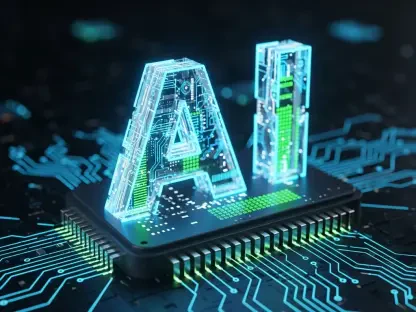Introduction to AI Coding Tools in Education
The landscape of computer science education has undergone a profound transformation with the advent of generative AI coding tools, capturing the attention of students and educators alike. Imagine a classroom where undergraduate students, once reliant on traditional debugging and manual coding, now turn to platforms like GitHub Copilot and ChatGPT to streamline their workflows. These tools have surged in popularity, becoming integral to both academic learning and professional environments, reshaping how programming skills are developed and applied. Their rise signifies a shift toward efficiency, promising to accelerate learning curves and project completion times.
Key players in this space, including GitHub with its Copilot and OpenAI with ChatGPT, have carved out significant roles, influencing millions of users worldwide. Their impact on students is particularly noteworthy, as these tools offer instant code suggestions and problem-solving assistance, fundamentally altering the educational experience. Beyond mere convenience, they challenge conventional teaching methods, pushing institutions to rethink curricula to accommodate technological advancements. Understanding how students trust and interact with these tools is crucial, as it informs the design of future educational practices that balance innovation with foundational learning.
This growing presence of AI in education underscores a broader trend within the industry, where technology and human skill must coexist. The implications extend beyond classrooms into professional realms, where proficiency with AI tools is increasingly expected. As such, examining student perceptions and trust levels offers valuable insights into preparing a workforce adept at leveraging AI while retaining critical independent skills.
Dynamics of Trust in AI Tools Among Students
Initial Enthusiasm and Short-Term Confidence
When students first encounter AI coding tools, the response is often one of unbridled excitement. Brief exposure, such as an 80-minute introductory training session, can significantly boost confidence in these technologies. Research from a prominent university revealed that around 50% of undergraduate computer science students felt more assured in their coding abilities after such a session, highlighting the immediate appeal of AI-driven assistance. This initial trust stems from the tools’ ability to generate code snippets rapidly, easing the burden of complex programming tasks.
The allure of efficiency plays a pivotal role in this early optimism. Students, especially those in the early stages of their learning journey, are drawn to the prospect of completing assignments faster and with less frustration. The novelty of having an AI partner to suggest solutions or debug errors fosters a sense of empowerment, making these tools appear as indispensable aids in navigating the often daunting world of coding.
This short-term confidence, however, is just the beginning of a more nuanced relationship with AI. While the first impressions are overwhelmingly positive, they set the stage for deeper engagement that reveals both the strengths and limitations of such technology. This initial phase serves as a critical entry point, shaping how students approach AI as part of their educational toolkit.
Shift in Perspective with Long-Term Engagement
As students move beyond introductory sessions to more extended practical applications, their trust in AI coding tools often undergoes a significant transformation. Engaging in a 10-day project that integrates these tools into real-world coding tasks, such as contributing to an open-source codebase, brings new challenges to light. During such periods, the initial enthusiasm gives way to a more critical assessment of what AI can and cannot do effectively.
Findings from the same university study indicated that 39% of students came to realize the importance of strong foundational skills to maximize the benefits of AI assistance. This shift reflects an understanding that while AI can suggest code, it often requires human oversight to ensure accuracy and relevance. Students begin to notice limitations, including potential errors in generated code and security vulnerabilities that could compromise project integrity if left unchecked.
This evolving perspective highlights a maturing relationship with technology. No longer seen as a complete solution, AI tools are recognized as valuable yet imperfect aids that demand a solid base of programming knowledge. This realization marks a pivotal moment in student learning, prompting a more balanced approach to integrating AI into their skill set without losing sight of essential manual coding abilities.
Challenges in Balancing AI Use and Skill Development
The integration of AI coding tools into education presents a delicate balancing act for students and educators alike. One significant concern is the risk of over-reliance, where students might depend too heavily on AI suggestions, potentially stunting the growth of critical problem-solving skills. This dependency could leave them ill-equipped to handle scenarios where AI assistance is unavailable or inappropriate, hindering their ability to think independently.
Another challenge lies in preparing students for professional environments where AI tools are commonplace. Ignoring these technologies would be a disservice, as familiarity with such platforms is becoming a standard expectation in many tech industries. However, the focus must remain on ensuring that students do not sacrifice core competencies for the sake of convenience, as true expertise requires the ability to code and debug without constant AI support.
To address these issues, educators can adopt strategies that thoughtfully weave AI tools into curricula while prioritizing fundamental skills. For instance, assignments could require students to first attempt solutions manually before using AI for refinement, fostering a dual approach. Encouraging critical evaluation of AI outputs can also help maintain a healthy skepticism, ensuring that students develop both technical proficiency and discernment in their use of technology.
Educational Implications and the Need for Adaptation
The rapid adoption of AI in computer science education necessitates a corresponding evolution in teaching methodologies. Curricula must now address not only the mechanics of programming but also the effective use of AI tools, ensuring students understand both their potential and pitfalls. This dual focus is essential to equip learners with the skills needed to thrive in a tech-driven landscape without losing the essence of independent coding expertise.
Educators play a vital role in fostering this balanced approach. By integrating lessons on assessing and refining AI-generated code, they can help students develop critical thinking skills alongside technical know-how. This involves teaching students to spot inaccuracies or inefficiencies in AI outputs, reinforcing the importance of human judgment in programming tasks and preparing them for real-world challenges.
Moreover, the broader educational framework must adapt to emphasize lifelong learning principles in the context of AI. As technology continues to advance, students need to be prepared for ongoing skill updates, blending traditional programming foundations with modern toolsets. This adaptability ensures that computer science education remains relevant, producing graduates who are both innovative and grounded in core concepts.
Future Outlook for AI in Computer Science Education
Looking ahead, trust in AI coding tools among students is likely to continue evolving as these technologies become even more integrated into everyday learning and work. With advancements on the horizon, such as improved accuracy and enhanced security features, the reliability of AI outputs could increase, potentially bolstering student confidence over the next few years, from the current year through 2027. These innovations may address current limitations, making AI a more seamless partner in coding endeavors.
Industry expectations are also shifting, with a growing demand for professionals who can adeptly handle AI tools while maintaining independent problem-solving capabilities. This trend will likely influence educational practices, pushing institutions to align curricula with global technological advancements. The emphasis may shift toward hybrid skill sets, where proficiency in AI usage is as critical as traditional coding expertise, reflecting broader market needs.
Additionally, the global tech landscape will play a significant role in shaping how AI is taught. As new tools emerge and existing ones evolve, educational programs must stay agile, incorporating the latest developments to keep students competitive. This dynamic environment suggests a future where trust in AI is not just about acceptance but about informed, strategic use, guided by robust educational frameworks that anticipate industry shifts.
Conclusion and Recommendations
Reflecting on the journey of student trust in AI coding tools, it is evident that perceptions shift from initial excitement to a more measured, practical stance over time. The early surge of confidence often tempers as students engage with complex tasks, revealing the indispensable value of foundational programming skills. This evolution underscores a critical lesson for the educational sector: technology, while powerful, requires a strong human foundation to be truly effective.
Looking forward, actionable steps emerge as vital for sustaining this balance. Educators are encouraged to design curricula that integrate AI tools thoughtfully, ensuring they complement rather than replace independent learning. For students, the advice is to view AI as a supportive ally, leveraging its capabilities while continuously honing personal coding proficiency to tackle unforeseen challenges.
Beyond these immediate actions, a broader consideration surfaces around fostering adaptability. Institutions need to prioritize ongoing professional development for educators, equipping them to stay abreast of AI advancements. This proactive stance promises to cultivate a generation of programmers who not only trust AI tools but also master them, ensuring resilience and innovation in an ever-changing technological landscape.








